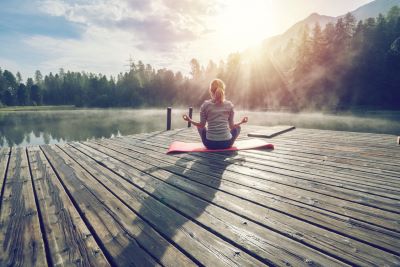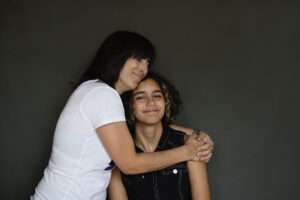You may intellectually know the benefits of getting some physical activity. You may even imagine how much better you’ll feel after you’ve gotten in a workout.
But it’s cold out. It might also be a dreary, gray winter day. And you’d rather stay in where it’s warm and cozy.
The motivation to make a trip to the gym – or even an outdoor walk or a run on your treadmill – may be lacking.
This winter scenario can be even more difficult for those suffering from seasonal affective disorder (SAD). Patients with SAD often present with symptoms similar to other types of depression: low energy, difficulty concentrating, sleep disruptions, eating disturbances, sadness, and anhedonia. Individuals with SAD often tend to sleep too much and increase their eating, especially carbohydrate-rich foods, which may lead to weight gain.
So, while getting outside regularly for exercise may be harder in cold weather, the benefits of physical activity are well-established, both for outdoor and indoor activities.
“A number of recent studies suggest that physical exercise may provide an effective and easily accessible treatment for patients suffering from SAD,” according to a review of studies on SAD published in the journal Biological Rhythm Research.
Mental health clinicians and researchers with experience in SAD suggest that almost any form of activity can help patients.
“Moving your body will compete with that tendency to be sluggish and can produce good brain chemistry,” Scott Bea, PsyD, a psychologist and emeritus staff member at the Cleveland Clinic, says in an article on the Cleveland Clinic website.
Getting Out
According to the Cleveland Clinic website, walking and running in the winter might be more accessible because they don’t require much additional gear besides appropriately warm clothing along with your running shoes.
Keep in mind that you might have to adjust your schedule; for example, running or walking during the shorter daylight hours may mean you can’t get up at 5 am for your morning run, or wait until 5 pm for an evening run. You may need to start exercising at lunch time.
Hiking and cycling could be other good choices. The right shoes are critical for hiking, and cycling depends on roads being clear of snow and ice.
There are also a variety of winter sports such as skiing or snowshoeing. Be sure to dress appropriately (and in layers) for any outdoor activities and watch out for icy spots.
Staying In

James McDeavitt, MD, professor of physical medicine and rehabilitation and executive vice president and dean of clinical affairs at the Baylor College of Medicine, says sustained activities such as running and aerobics affect moods positively in an article on the Baylor website. But, he says, they aren’t the only forms of activity that do so. Yoga, tai chi and meditation can help with symptoms of depression.
“There is value to seasonally maintaining your routine,” he says. “Even if you regularly run outdoors in the spring and have to move indoors for the winter, don’t blow off your workout.”
To help deal with any form of depression, the Mayo Clinic suggests that even just 10 to 15 minutes of activity a day may provide a boost. Tips that help patients with depression include identifying enjoyable activities, setting reasonable goals, and considering exercise as a tool for getting better instead of viewing it as a chore.
Medical professionals say it’s important to check with your doctor before beginning an exercise program. And if you think you might be suffering from SAD, talk with your healthcare provider or mental health professional.
For more information about this and other topics, please visit:
What is seasonal affective disorder?
Tips to cope with seasonal affective disorder
Our articles are for informational purposes only and are reviewed by our Medical Information team, which includes PharmDs, MDs, and PhDs. Do not make any changes to your current medications or dosing without consulting your healthcare provider.
The GeneSight test must be ordered by and used only in consultation with a healthcare provider who can prescribe medications. As with all genetic tests, the GeneSight test results have limitations and do not constitute medical advice. The test results are designed to be just one part of a larger, complete patient assessment, which would include proper diagnosis and consideration of your medical history, other medications you may be taking, your family history, and other factors.
If you are a healthcare provider and interested in learning more about the GeneSight test, please contact us at 855.891.9415. If you are a patient, please talk with your doctor to see if the GeneSight test may be helpful.









